Good, Fast, Cheap: Can you really have it all?
Every SaaS founder or product leader knows the old rule: “Good, fast, cheap – pick two.” The idea, often visualised as an iron triangle of product development, is that you can’t maximise quality, speed, and low cost all at once.
- If you want a good (high-quality) product built fast, it won’t be cheap.
- If you churn out something fast and cheap, it likely won’t be very good.
- And if you aim for good and cheap, be prepared to wait forever for it.
In theory, it’s an impossible trilemma. But in practice, can smart strategies bend this rule?
We’re putting together a series of posts to dig into this question and share what we’ve learned about how SaaS teams actually tackle these trade-offs in the real world.
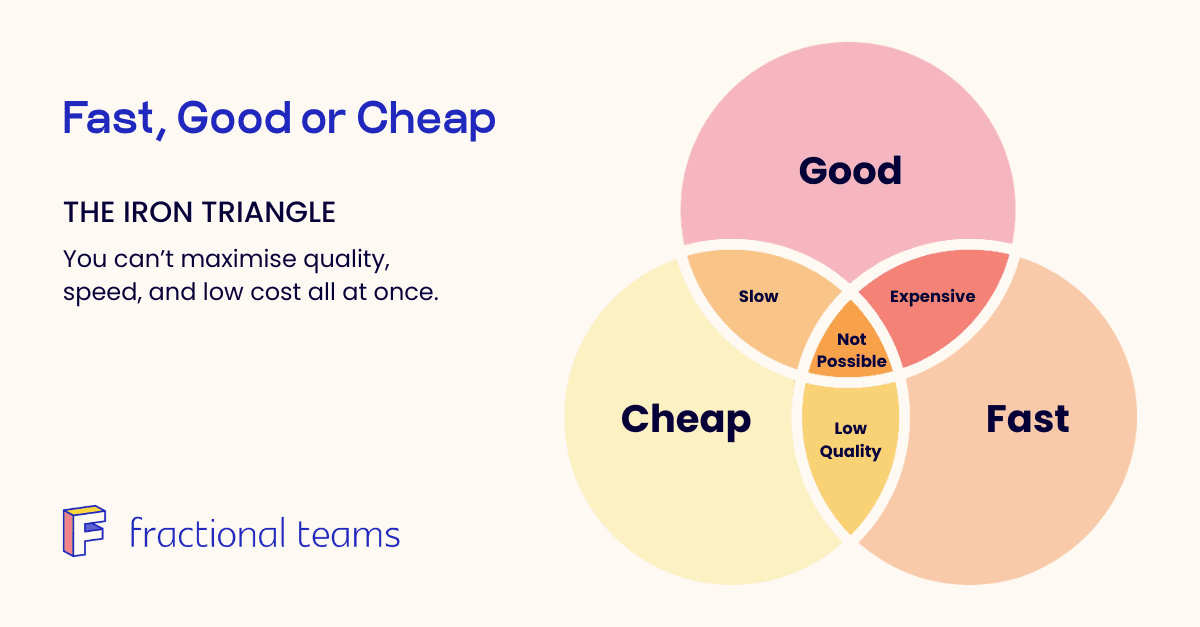
Table of Contents
The dream triangle (or a trap?)
The allure of having a product that is good, fast, and cheap is every startup’s dream. A perfect triangle of happy customers, quick launches, and low burn rate. The trap, however, is that pursuing all three often leads to hidden trade-offs. As the saying goes, “good, fast, cheap – you can never have all three.”
If you try, you usually end up with one side of the triangle collapsing.
Fast + Cheap = Low Quality
Choosing “fast + cheap” tends to yield low-quality results. You might ship a product quickly on a shoestring, but it’s riddled with bugs or missing key features.
Some SaaS companies fall into this trap by cutting corners on quality and then over-relying on their internal support teams to compensate for the product’s flaws. They ship a rushed release and think they can mask the shortcomings with heroic customer support and manual workarounds. It might work for a short while, but it’s not sustainable.
You end up with frustrated support reps, confused users, and a mounting pile of “urgent” fixes. In other words, you didn’t really get “good, fast, and cheap” – you got fast, cheap, and a mess.
Good + Cheap = Slow
On the flip side, emphasising “good + cheap” (high quality on a low budget) without acknowledging the time it takes can be equally problematic. Teams that insist on perfecting every detail with minimal resources often discover that good + cheap = slow.
We’ve seen startups spend forever polishing an app with a tiny team (to keep costs cheap). By the time they finally launch, the market has moved on or a competitor beat them to the punch. Or worse, they run out of money before the product ever sees daylight.
Good + Fast = Expensive
Many founders discover too late that trying to brute-force the triangle by throwing money into it leads to a budget blowout.
Even when you try to keep costs low, hidden expenses in areas like SaaS subscriptions can sneak up and derail your budget, as we explored in the hidden costs of SaaS and how to avoid them.
Sacrificing quality is not an option
Quality (“good”) is the most tempting corner to sacrifice. After all, you can often launch something that technically works and tell yourself you’ll fix the gaps later. But who would intentionally choose low quality?
If a product isn’t solving the customers problem reliably, no amount of speed or low price will save it. A poor-quality product frequently leads to hidden costs you might not see coming, like increased support demands, customer turnover, and potential damage to your reputation.
So, dropping “good” entirely is never a real option if you plan to stay in business. The trap is thinking you can get away with it for the short term. Too many SaaS teams have scrambled to respond to customer complaints with behind-the-scenes “internal support” solutions — basically using people to compensate for a subpar product. It might keep a few customers happy for now, but it isn’t scaling or truly addressing the core issue.
Something’s got to give...
The key insight of the triangle is that something’s got to give. If you insist on exceptional speed and rock-bottom costs, quality will slip. If you demand top quality and low cost, your timeline stretches out. If you want high-quality delivered fast, you need to invest more.
Understanding this reality upfront can save you from the triangle’s trap. But does that mean you can never inch closer to having it all?
Not exactly. It’s about being clever in how you define “good,” where you can accept “good enough,” and how you use new approaches to cheat the usual trade-offs.
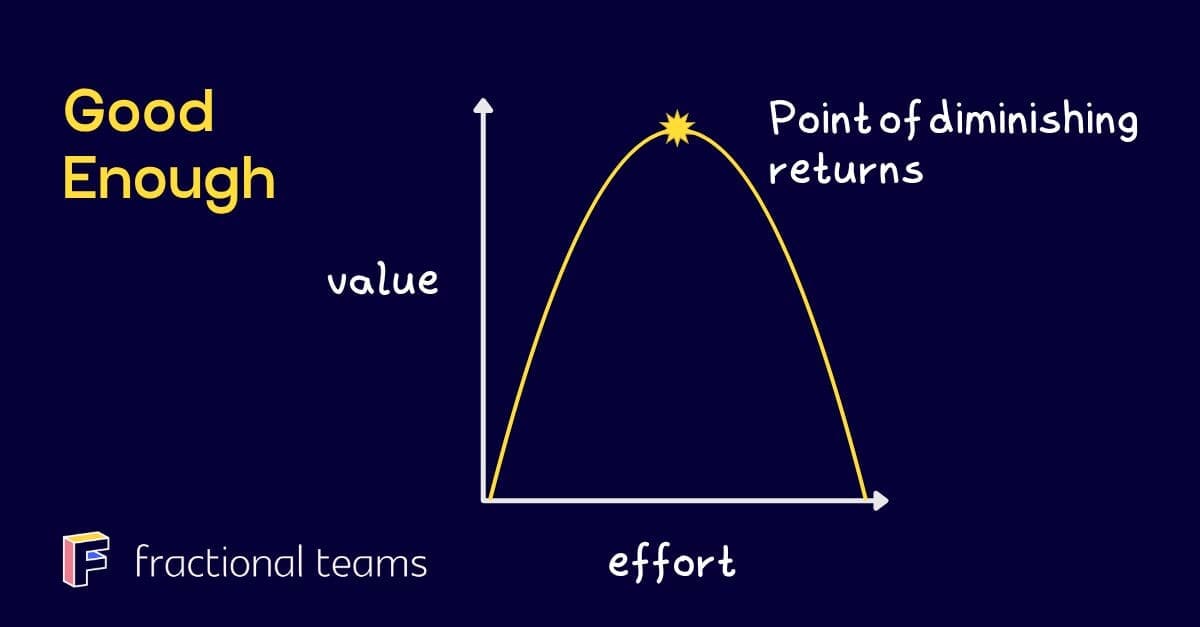
Why “Good” is sometimes just “Good Enough”
If there’s one side of the triangle you should never fully sacrifice, it’s “good.” A product that doesn’t work or doesn’t meet a real need is DOA.
Avoid the Perfectionism Trap
“Good” doesn’t mean “perfect.” In the quest to build something great, many founders fall into the perfectionism trap. Polishing and refining endlessly, aiming for a flawless product launch. The result: they move too slow and miss the market window, or burn resources on gold-plating things customers don’t even care about.
Define “Good Enough”
In practice, good enough is often good enough. Especially in B2B SaaS product strategy, you have to distinguish between mission-critical quality versus nice-to-have polish.
Think of it this way: does your product solve the core problem and deliver real use-value to customers? If yes, it’s okay if it has a few rough edges initially. In fact, Silicon Valley lore encourages getting a minimal but working product in front of users sooner rather than later.
Get Real Feedback & Iterate
You need real feedback to iterate. The main goal of an MVP is to test assumptions and learn from users. An MVP should be high enough quality to be viable, but it doesn’t need every feature perfected. Embracing “good enough” means prioritising value instead of perfecting every detail.
If you’re not embarrassed by your first version, you launched too late.
Starting small to unlock all three
So, is there a way to sneak under the triangle’s wire to achieve something good, fast, and cheap? The answer is yes, but with a catch: you can only have all three if you shrink the scope.
In other words, you can have a high-quality product, quickly delivered, and affordable by making the problem space as small and focused as possible. Focus on a niche market or a single core feature and nail that, rather than trying to boil the ocean.
Imagine trying to build a huge all-in-one platform from day one. You’d need a big team (costly), lots of time to develop and polish features, and the end result might still be mediocre at some things because your attention was spread thin.
Now, imagine building a simple tool that does one thing extremely well for a very specific set of users. You could likely build it with a tiny team (or even solo), in a short timeframe, with high quality, because you’re not dealing with endless edge cases and feature creep.
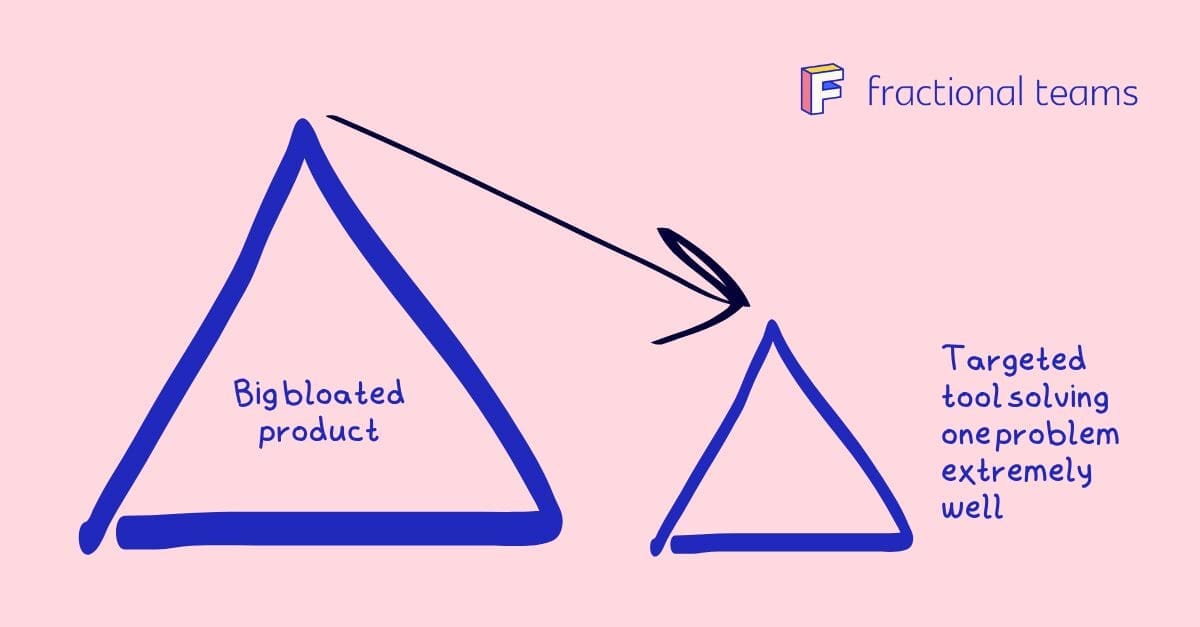
You turn the impossible triangle into a much smaller triangle that you can achieve. Stop trying to create the next big thing. Build the smallest possible version of your idea – something one or two people can sustain, get it profitable, then grow from there.
By intentionally staying small and lean at the start, you avoid the “too much, too fast” failure mode and actually deliver all three: a good product, delivered fast, on a cheap budget.
The micro-SaaS approach
This is the ethos behind many micro-SaaS successes. They start in a tiny niche. In fact, focusing on a narrow niche has multiple benefits. As one SaaS founder said on Reddit, in a small niche you can deeply understand your customer’s pain points, have a tighter feature set, and not feel pulled in a thousand directions by diverse demands.
Less competition and a clearly defined audience make it easier (and cheaper) to market, too.
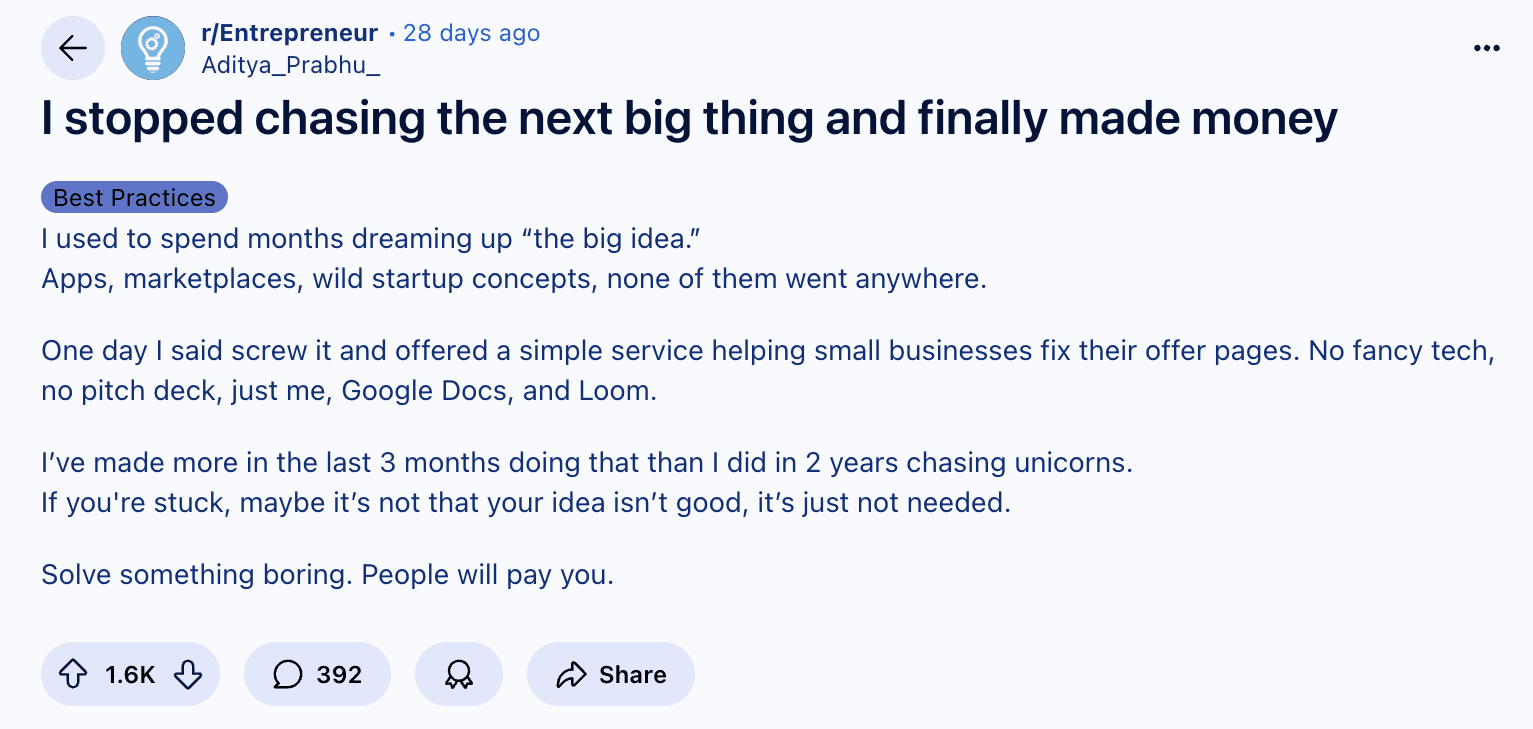
Practical niche examples
Focused Use Case
Instead of “a platform for all marketing teams,” you build “a workflow tool for podcast content marketing teams” – a very specific use case.
Efficient Development
With that focus, you can build something really good quickly because you’re not solving every marketing problem, just one. Your development timeline is shorter and costs lower, since you’re only building what that niche truly needs.
Limited Complexity
When your resources are limited (as they usually are in an early-stage SaaS), fewer moving parts means faster build and fewer bugs to squash.

Real-world success stories

Amazon began by selling just books online before it became the everything store. By starting with a single category, they delivered a great experience quickly and cheaply relative to trying to launch with all products.

Slack was born from a small internal tool at a failed game studio – the founders realised that this little messaging system they used for their team was incredibly useful, possibly more than the game they were building. They pivoted to focus entirely on that tool, and the rest is history. Slack’s team, tiny at first, could make the product excellent for tech teams like themselves without massive funding. Only later did it scale up and out.
This pattern repeats: solve a specific problem really well, win a small group of raving users, and you’ve basically hacked the triangle. You delivered quality fast on a budget by limiting the scope.
Scaling from a solid foundation
Starting small doesn’t mean staying small forever. It’s about sequencing. You prove you can have all three triangles (good, fast, cheap) at once on a micro-scale, then you use that momentum (and revenue) to scale up the triangle gradually.
When you expand to the next adjacent niche or add the next feature, you do so with the foundation (and funding) that your initial success provided.
Importantly, that initial success also validates that you built the right thing. It’s far better to dominate a tiny market with an awesome product than to have a half-baked product in a large market and get dominated by others.
As the saying goes, nail it, then scale it. By starting small, you give yourself the real chance later to have a broader offering that’s still good, reasonably fast, and cost-effective because you’re growing off a solid base (and maybe can afford to invest more without “bet the company” risks).
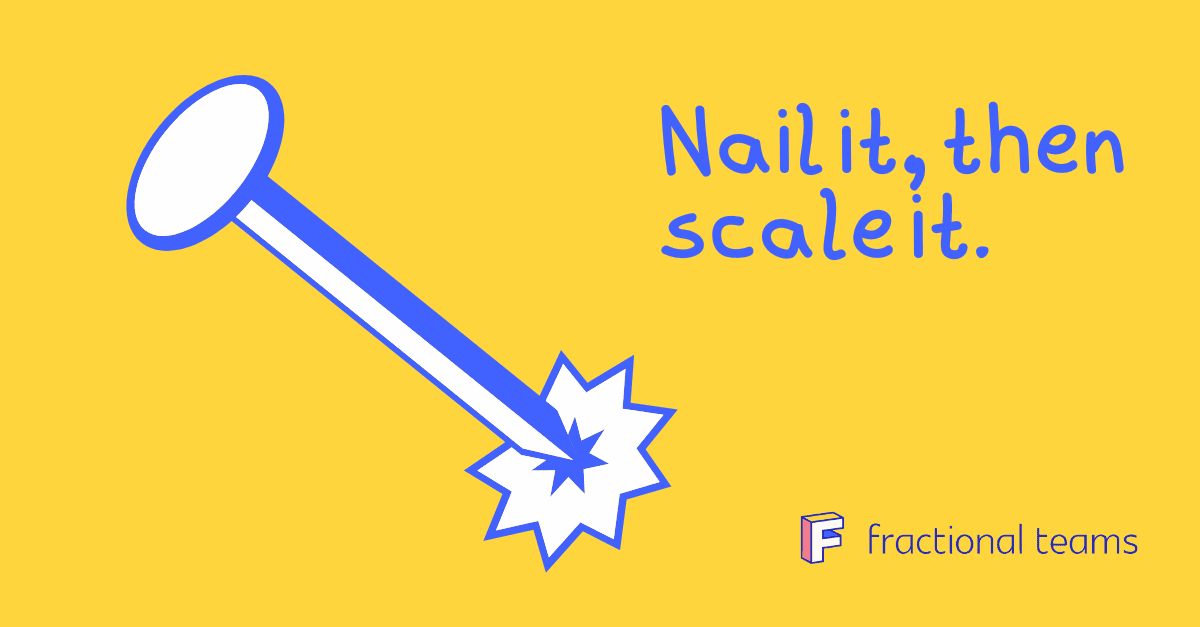
Conclusion
Building a SaaS product means making choices and accepting that you can’t do everything at once. Staying focused, starting small, and deciding what “good enough” looks like can help you move faster without burning through your budget or sacrificing quality.
And while smart choices go a long way, the bigger truth is this: if your product solves a real pain point, it often markets itself. No one is waiting around for yet another random SaaS tool. Many startups struggle not because marketing is impossible, but because they built something nobody truly needs.
In Part 2, we’ll look at what happens when the market itself becomes the obstacle and explore how you can respond.
Dariia Panchenko
Hi! I'm Dariia Panchenko, Analytics and Community Manager at Fractional Teams. I write about the best B2B marketing strategies and practices.
